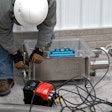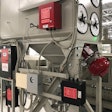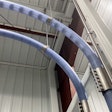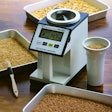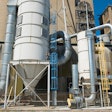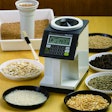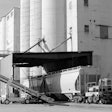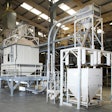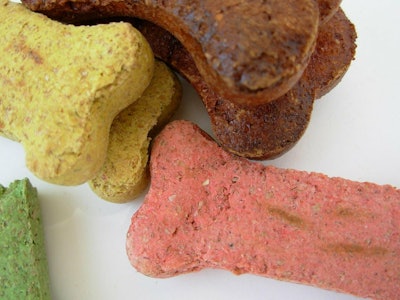
For pet food processors, wire belting conveyors often play a key role in safely and efficiently moving product and materials through the production line, often in high volume, at quite high or low processing temperatures, with significant wear and tear on equipment.
However routine this is in the industry, such conveyors must not only be well suited to the process, but also safe, efficient, and reliable, as well as easy to clean and maintain.
Among the variety of conveyors that pet food processors use are wire belting conveyors that some facilities utilize to process big beef bones that dogs chew on. At some facilities, after a large, commercial oven bakes the bones, product is conveyed on the wire belting to a basting batch tank that adds a variety of flavors such as gravy, peanut butter, etc. While a basting “fountain” adds flavored liquid to the top of bones, however, liquid baste also “bubbles up” from below the wire belting to coat the bottom of bones.
For the basting of the bones, some pet food facility processors like the ample open area of wire belting because the liquid baste flavoring must coat the bottom of the bone, while the basting fountain coats the top.
In such cases, pet food processors often try to cover the whole bone with baste, not just the top. For basting such bones, conveyor wire belting called Flexx Flow is frequently used since it has more open area and allows a good basting on the bottom as well as the top.
USDA Approved, Flexx Flow belting, made by Lancaster, PA-based Lumsden Belting, a manufacturer of industrial metal conveyor belts, is commonly used for pet food processing applications such as cooking or coating in temperatures from freezing to +500°F.
For the basting that puts flavor on the bones, the belting works well for the application.
The wire belting is durable and can be made without seams. To fit into space-restricted pet food processing lines, the belting design allows for one of the smallest reverse bends available in the industry.
In many cases, the belting design fits close to other conveyors at facilities, which can help to enable a reliable transfer without much of a gap.
In terms of reliability, since the belting is sprocket driven, it provides positive drive and consistent tracking. Because the belting is designed to articulate around small diameter drive and tail rolls for tight transfers, this ensures gentle handling and constant positioning of the product.
To enhance safety, in addition to a standard single loop edge, the belting also offers an EdgeWise “snag free” option.
Unlike standard belting with sharp, exposed wire burrs that protrude from the edge, EdgeWise edges are “bent in” to prevent any wire burr protrusion.
To eliminate potential “snagging” of operator clothing with typical belting’s short, sharp edges, the design also utilizes a longer, rounded edge that prevents snagging. The longer edge significantly reduces tangling during installation as well.
Ensuring safety in the pet food industry is also a matter of maintaining cleanliness of the equipment, so ease of cleaning is an important consideration in selecting a conveyor too.
The design of such wire belting is also conducive to both food safety and cleaning. In this regard, the wire belting utilizes a flow through design that allows for unrestricted wash down and inspection. There is minimal blockage between the holes, so it does not plug with debris or residue, he says. Also, the stainless-steel belting is easy to clean with foam cleanser.
In pet food processing, with inevitable wear and tear, any belting will require maintenance.
When repairs are required, any necessary patches to the wire belting can be spliced directly into it, minimizing labor and downtime.
While pet food processors will use various material handling equipment in any facility, carefully selecting conveyor wire belting that safely accommodates the production process, performs reliably, and cleans easily can be a competitive advantage.
For more information, click here.






